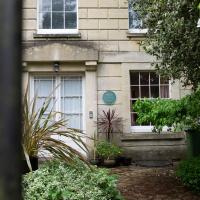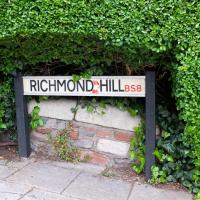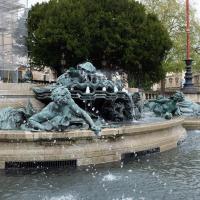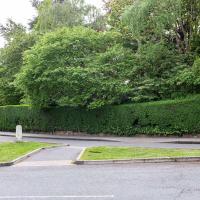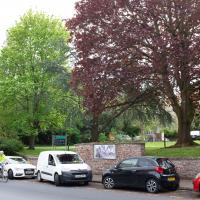Tagged: richmond-hill-gardens
Whistle Stop Tour Via a Hansom
12 May 2021
I wanted to take another snap of an interesting Gothic Revival place in Clifton, having found out a bit more about the owner. On the way I walked through the Clifton Vale Close estate, idly wondering again whether it might've been the site of Bristol's Vauxhall Pleasure Gardens (I've not researched further yet.) On the way back I knocked off the last remaining bit of Queens Road I had yet to walk and tried to find the bit of communal land that Sarah Guppy bought so as not to have her view built on...
...lived here. You may remember seeing her gravestone in St Andrew's Churchyard...
Her Wikipedia entry notes:
She bought the land opposite the house for the benefit of Clifton residents and it still remains green space
While there is some green space opposite, it looks very private and seems to belong to Edgecumbe Hall (sometimes spelled Edgecombe, it seems...)
CHIS's Communal Gardens web page says:
Richmond Hill Gardens. ca 1830 This forms a key visual feature at the top of the triangle. There are specimens of at least 23 tree species, including a magnificent Weeping Beech, the finest in the city, and a Redwood, which is an offshoot of a tree cut down twenty years ago. The land was bought by Sarah Guppy (1770-1857) an inventor and designer who was consulted by Brunel. She lived in Richmond Hill and did not want any building opposite, so bought the land and made it communal. For many years it was a nursery garden but now it has become a well hidden car park for those houses to which it is attached.
...and lists it under "Private Communal Gardens", so I suppose it's not public, but it is communally-owned (and likely to have a covenant against building?) Seems a bit of a shame it's ended up as a car-park.
From the listing:
By Edwin Rickards and Henry Poole. Pennant ashlar, limestone balustrades, cast-iron railings and lamps, bronze statues. Raised forecourt with curved steps and a large fountain with bronze aquatic statues and granite urns; flanking plinths with flagstaffs on moulded bases, turned balustrades with lamps, curved railings with urn finials to the front, bronze lions couchant to the rear, piers to outer gateways with lamps on moulded bases. Rickards and Poole were a notable partnership of the Edwardian period, and this is a particularly good example of their work.
It's nice to see it running. It was dormant the last time we saw it, possibly closed down for winter?
